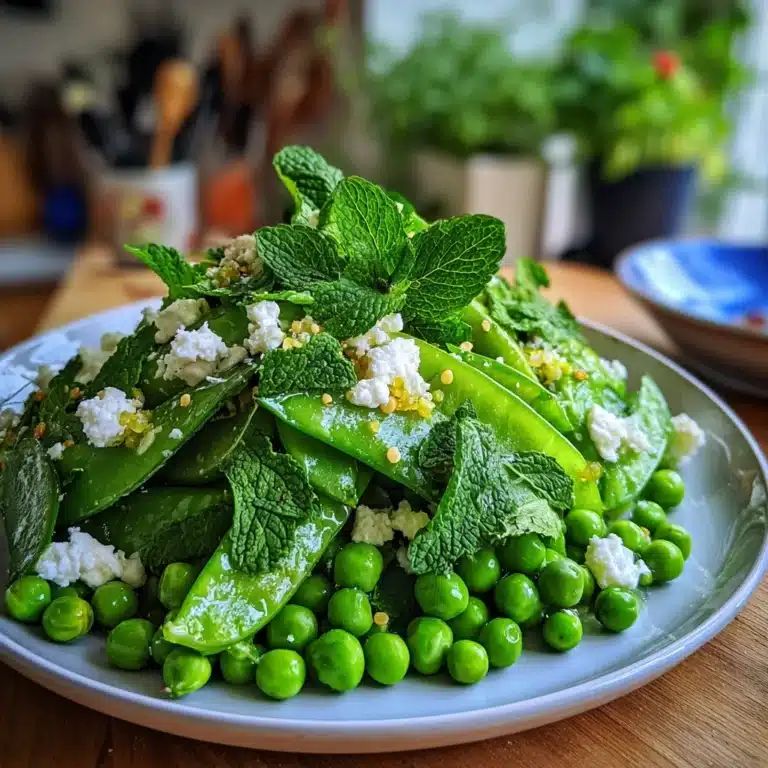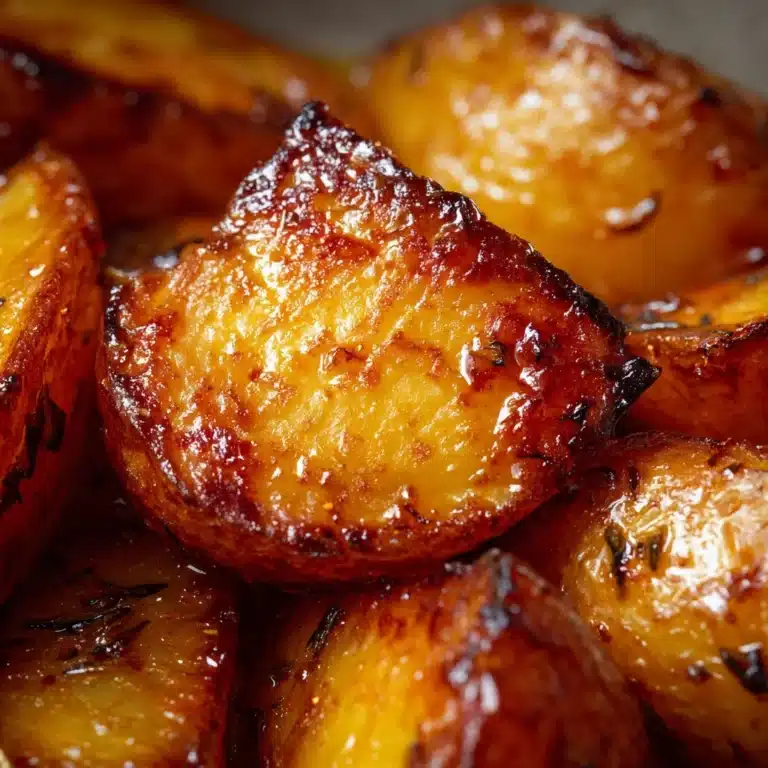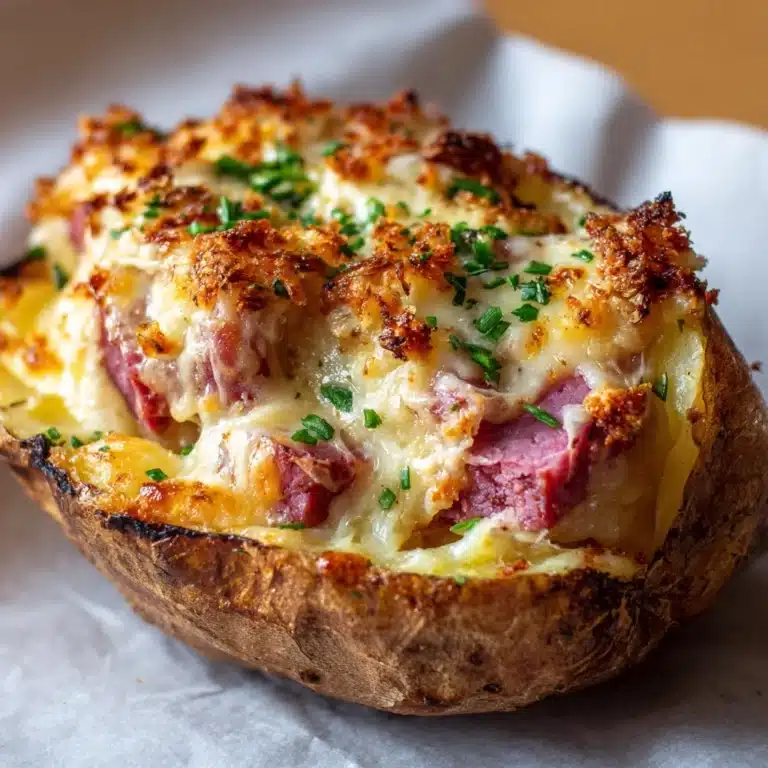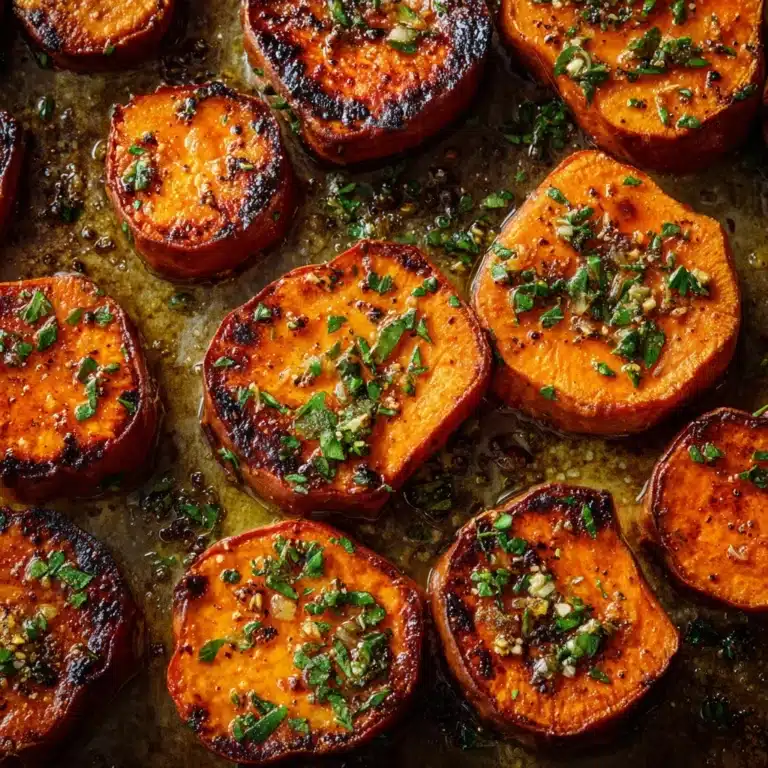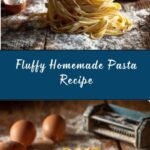If you’ve never experienced the magic of Homemade Pasta, prepare for love at first bite. Soft, tender, and with a flavor miles above anything boxed, this is one of those kitchen projects that delivers joy from start to finish. Making pasta from scratch isn’t just about the resulting noodles; there’s a satisfaction in the knead, the transformation of basic ingredients, and the anticipation as it all comes together. Let’s dive in—because Homemade Pasta deserves a spot at your table, any night of the week.

Ingredients You’ll Need
Homemade Pasta comes together with just a handful of pantry staples. Each ingredient brings something special—structure, richness, or the golden color that signals it’s made with love. Here’s what you’ll need, and a tip for getting the best from each one:
- All-purpose flour (2 cups): The sturdy backbone of pasta, this creates a dough that’s easy to work and yields that coveted bite.
- Large eggs (3): The secret to a silky, rich pasta dough; eggs give both color and a sumptuous texture you’ll notice in every forkful.
- Salt (1/2 teaspoon): Never skip this—it elevates the flavor from bland to crave-worthy, making every noodle shine.
- Extra flour for dusting: Prevents any stickiness while rolling out your dough, ensuring every strand stays separate and beautiful.
How to Make Homemade Pasta
Step 1: Mound and Well
Start by creating a mound of flour on a clean countertop or in a large, wide bowl if you prefer to contain the flour. Make a well in the center with your hands. Crack the eggs into this well, and sprinkle over the salt. This little “volcano” setup helps you control the incorporation and keeps things neat—plus, it’s fun!
Step 2: Beat and Incorporate
Use a fork to gently beat the eggs right in the well, slowly sweeping in a little flour from the edges. Keep going, folding more flour in, until a shaggy dough begins to form. It will look messy at first, but that’s exactly what you want—just keep working it until it all comes together in a ball.
Step 3: Knead the Dough
Once you’ve got a workable mass, switch to your hands. Knead the dough by pressing it firmly with your palms, folding it over itself, and turning as you go. After about 8–10 minutes, the dough should feel smooth, elastic, and no longer sticky. Too sticky? Add a dusting of flour. Too dry? Drizzle in a tiny bit of water—it’s all about feel.
Step 4: Rest and Relax
Wrap your dough tightly in plastic wrap and let it rest at room temperature for 30 minutes. This rest is crucial; it allows the gluten to relax, which makes rolling out your Homemade Pasta a breeze and ensures a supple, tender noodle.
Step 5: Roll and Shape
Once rested, divide your dough into 2–4 pieces (smaller pieces are easier to work with). With a pasta machine or a rolling pin, roll each portion out to your desired thickness. Dust with extra flour as needed to prevent sticking. Cut into fettuccine, tagliatelle, or sheets for lasagna—whatever shape is calling you! Each style soaks up sauce in its unique way.
Step 6: Cook and Enjoy
Bring a large pot of salted water to a rolling boil. Drop in your fresh pasta and cook for just 2–4 minutes, depending on thickness. Homemade Pasta cooks much faster than dried—taste and drain as soon as it’s tender yet with a little bite. Toss immediately with your favorite sauce and serve.
How to Serve Homemade Pasta
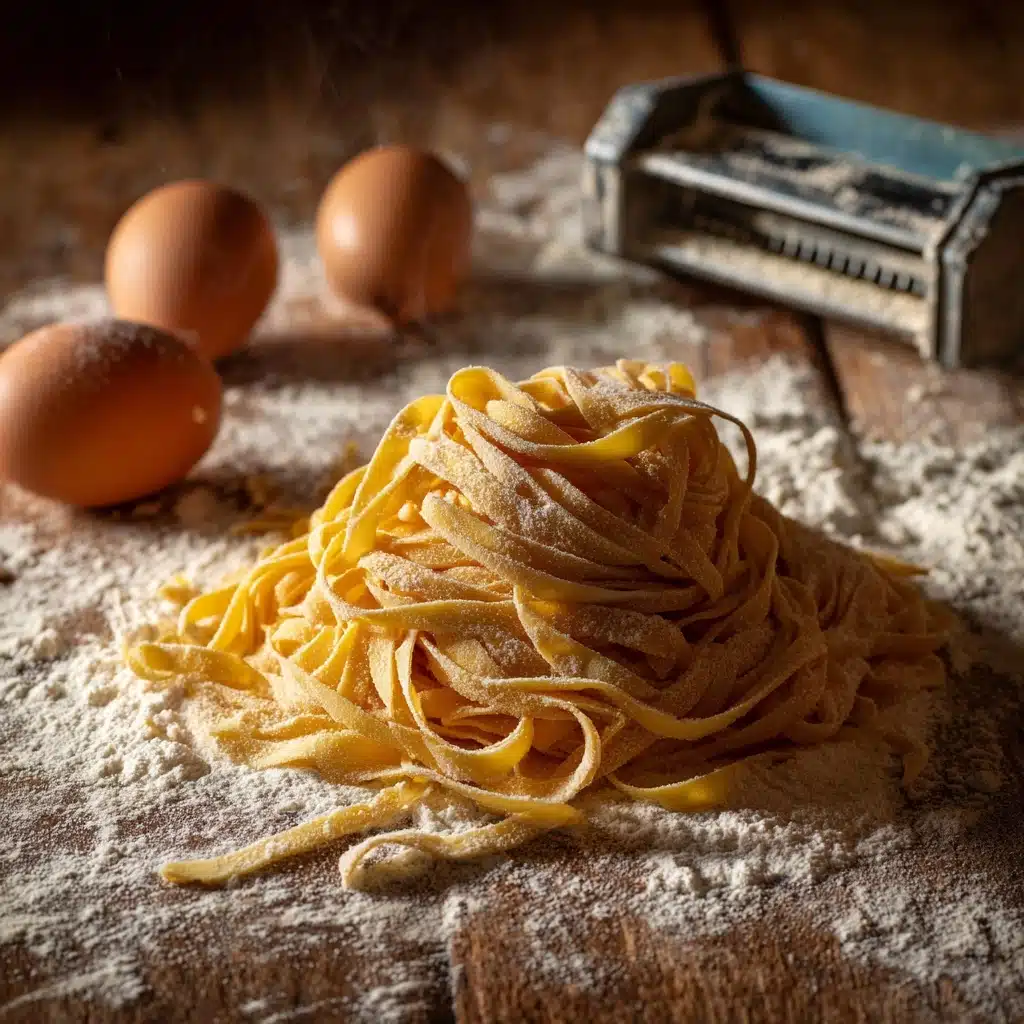
Garnishes
Shower your cooked Homemade Pasta with fresh chopped herbs like basil or parsley, a generous grating of Parmesan cheese, or even a drizzle of good olive oil. Each garnish adds more aroma, color, and that final flourish every great pasta dish deserves.
Side Dishes
Pair your pasta with a crisp green salad, garlicky sautéed vegetables, or a golden slice of toasted focaccia. These light and bright sides balance the comforting richness of the noodles for a well-rounded meal.
Creative Ways to Present
Try serving your noodles twirled neatly into nests for an elegant touch, or set up a “pasta bar” with assorted sauces and toppings so everyone can create their perfect bowl. For special occasions, layer sheets of Homemade Pasta into a stunning lasagna or roll them with ricotta for cannelloni.
Make Ahead and Storage
Storing Leftovers
If you have leftover cooked pasta, store it in an airtight container in the refrigerator for up to two days. Tossing cooked noodles with a tiny bit of olive oil before storing keeps them from sticking together.
Freezing
For long-term storage, freeze shaped, uncooked Homemade Pasta on a floured baking sheet until firm. Transfer to a freezer-safe bag or container and freeze for up to two months. Cook straight from frozen, adding just a minute or two to the boiling time.
Reheating
To reheat cooked pasta, simply dip it for 30 seconds in boiling water, or warm in a skillet with a splash of water or sauce. This brings it back to life without drying it out or making it mushy.
FAQs
Can I use a different type Main Course
Absolutely! While all-purpose flour works wonderfully, incorporating semolina flour gives more bite and a golden hue. Experimenting with 00 flour creates silkier noodles reminiscent of Italian trattorias.
Do I need a pasta machine?
Nope! A rolling pin does a perfectly fine job, though it takes a little more elbow grease. Rolling by hand can even lead to variations in thickness for a rustic, homey charm in every bite of your Homemade Pasta.
How do I know when the pasta dough is kneaded enough?
The dough is ready when it’s smooth, elastic, and springs back when poked. It shouldn’t be sticky, and it should resist tearing—a good knead ensures tender, not tough, noodles.
Can I make Homemade Pasta in advance?
Yes! You can store the wrapped dough in the refrigerator for up to two days. Just let it come to room temperature before rolling and shaping for the best results.
What sauces go best with Homemade Pasta?
Because fresh noodles soak up flavor beautifully, simple sauces like tomato basil, brown butter and sage, or even a classic Alfredo shine. Of course, homemade pesto or a hearty ragu are always welcome partners.
Final Thoughts
There’s a particular joy in mastering Homemade Pasta—turning basic ingredients into something extraordinary with your own hands. If you haven’t made your own yet, I encourage you wholeheartedly to give it a try; once you taste the difference, you’ll be hooked. Homemade Pasta isn’t just food—it’s an experience worth savoring.
Print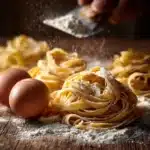
Homemade Pasta Recipe
- Total Time: 54 minutes
- Yield: 4 servings 1x
- Diet: Vegetarian
Description
Learn how to make delicious homemade pasta from scratch with this easy recipe. With just a few simple ingredients, you can create fresh pasta that is perfect for any sauce or dish.
Ingredients
All-Purpose Pasta Dough:
- 2 cups all-purpose flour
- 3 large eggs
- 1/2 teaspoon salt
- Extra flour for dusting
Instructions
- Prepare the Dough: On a clean surface or in a large bowl, mound the flour and make a well in the center. Crack the eggs into the well and add the salt. Using a fork, beat the eggs, gradually incorporating the flour from the edges. Once a dough begins to form, use your hands to knead it until smooth and elastic, about 8–10 minutes. If the dough is sticky, add a little more flour; if too dry, add a tiny splash of water.
- Rest and Shape: Wrap the dough tightly in plastic wrap and let it rest at room temperature for 30 minutes. After resting, divide the dough into 2–4 pieces. Roll out each piece using a pasta machine or rolling pin to your desired thickness. Cut into shapes like fettuccine, tagliatelle, or sheets for lasagna.
- Cook and Serve: Cook the pasta in salted boiling water for 2–4 minutes, depending on thickness, until tender. Drain and serve with your favorite sauce.
Notes
- You can use a mix of all-purpose and semolina flour for added texture.
- Dough can be made ahead and stored in the fridge for up to 2 days or frozen for longer storage.
- Prep Time: 20 minutes
- Cook Time: 4 minutes
- Category: Main Course
- Method: Boiling
- Cuisine: Italian
Nutrition
- Serving Size: 1 cup cooked pasta
- Calories: 220
- Sugar: 1g
- Sodium: 160mg
- Fat: 4g
- Saturated Fat: 1g
- Unsaturated Fat: 2g
- Trans Fat: 0g
- Carbohydrates: 35g
- Fiber: 1g
- Protein: 8g
- Cholesterol: 105mg

